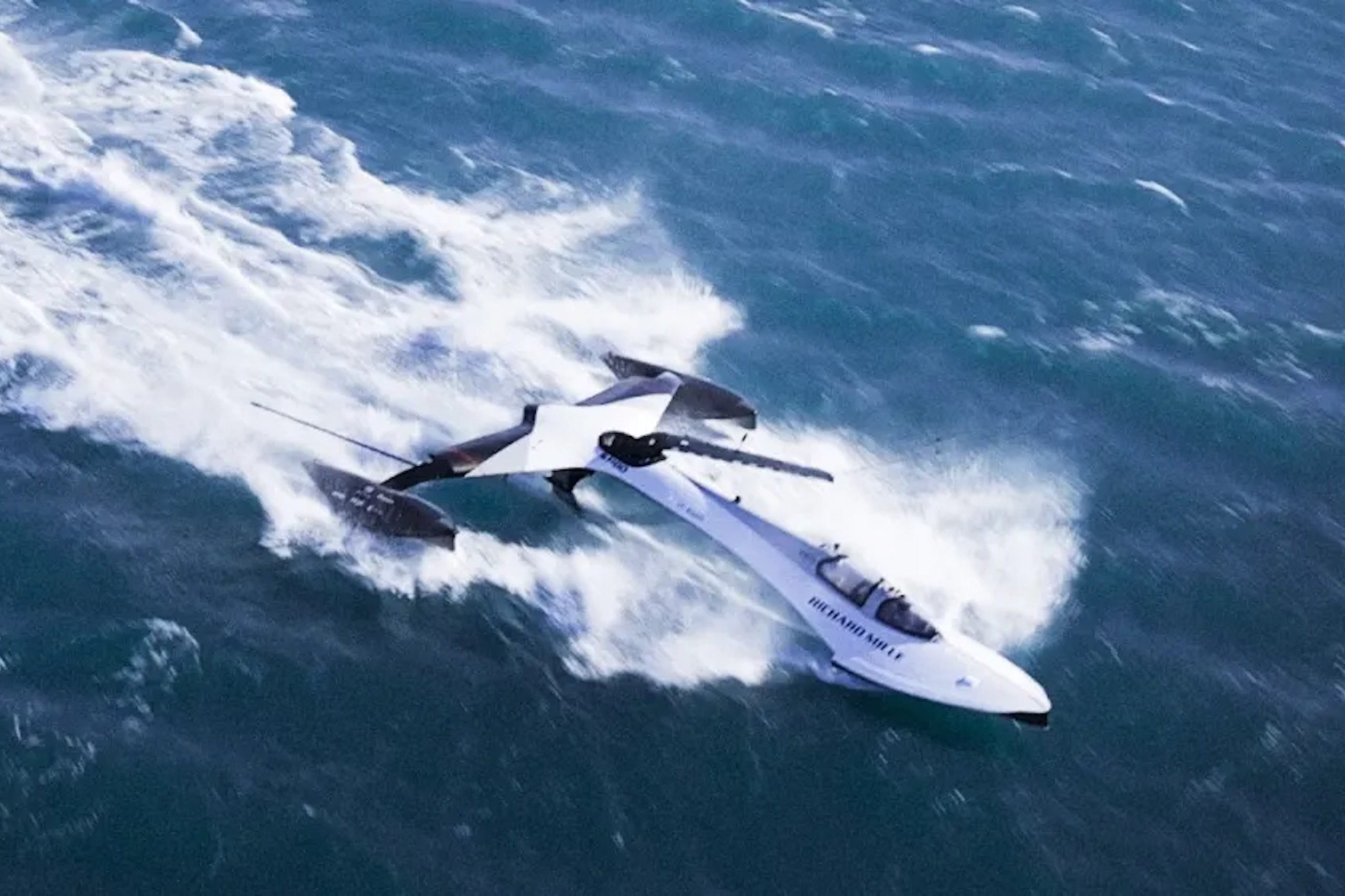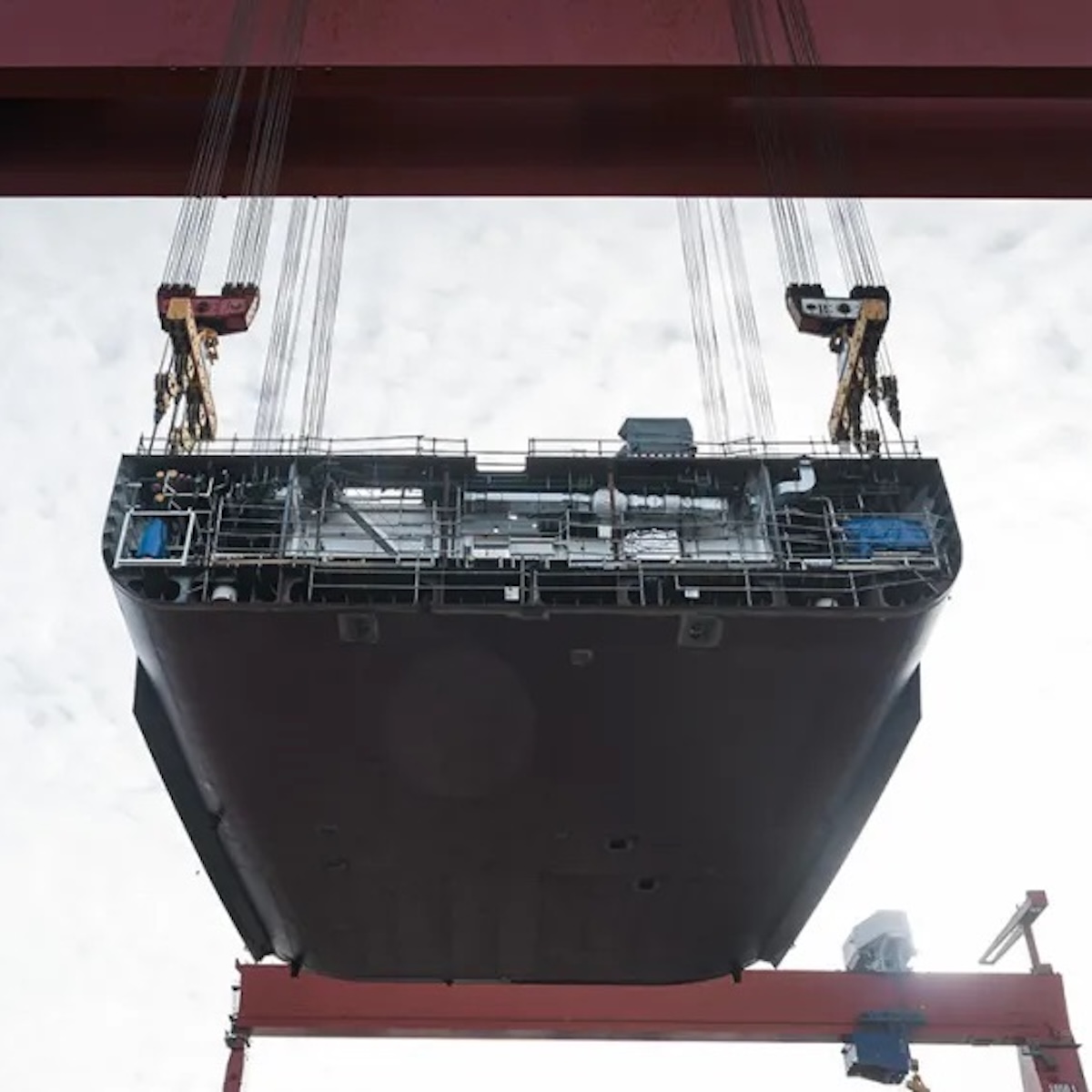This video shows what it’s like to approach the mythical 54-knot (62.1 mph, 100 kmh) speed barrier, considered the supersonic barrier on the water, on an unpowered sailboat. At that speed, cavitation beneath the water begins to slow down any hull, and with no motor to push it through, the hull design is critical for moving beyond that hump.
The team behind the rocket-like SP80 foiler, which recently reached 51-plus knots (59.03 mph), plans to soon cross the magical 54-knot line on its way to beating the speed record of 65.45 knots (75.3 mph), set by Paul Larsen in 2012 aboard Vestas Sailrocket II.

Image courtesy of SP80
“This run above 50 knots allowed us to finally observe the behaviour of our foil in a speed range that remains largely unexplored in the world of sailing,” said Benoît Gaudiot, kite pilot aboard the SP80 experimental raceboat. “We deliberately slowed the boat down just before reaching 52 knots as a precaution, but our analysis of the data indicates that it did not encounter any major barriers.”
The slender, 33-foot foiling trimaran, with sponsons on both sides and a small, protected cockpit for the pilot and a co-pilot, performs more like a kiteboard than a traditional sailing yacht. The team hopes to not only break Vestas Sailrocket II’s record, but shatter it since its boat has a theoretical top speed of 80 knots, or 92 mph. Hence the SP80 name.
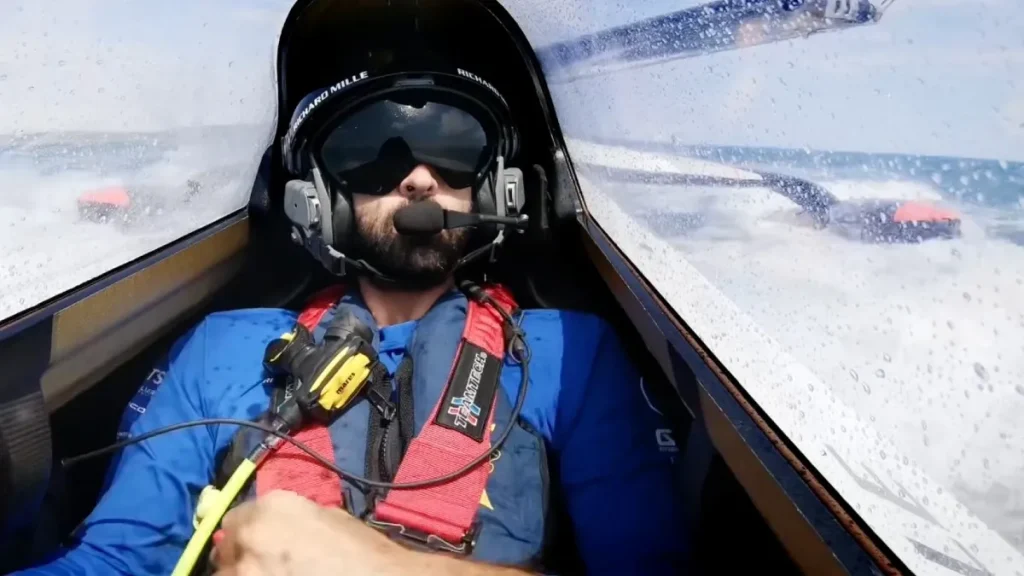
Image courtesy of SP80
Despite its sponsorship by Swiss watchmaker Richard Mille, the SP80 initiative is a shoestring startup launched nine years ago by three friends—Mayeul van den Broek, Xavier Lepercq, and Benoit Gaudiot—who decided to create a boat that would cross the seemingly uncrossable 80-knot mark. The team is using a proprietary—and yet unproven—design that pairs the massive kitesurfing sails with a carbon-fibre hull weighing just 330 pounds. The trimaran initially took more than two years and 40,000 hours to design, and it has since gone through several iterations.
Under the rules, the SP80 is not allowed to use the same type of electronics or lithium batteries to help adjust the sails as, say, the America’s Cup or SailGP foilers, even though, proportionally speaking, the SP80 is facing a much higher load on its sails. It’s only allowed to use wind power. As a result, it is testing in one of the world’s windiest stretches outside Leucate, France.
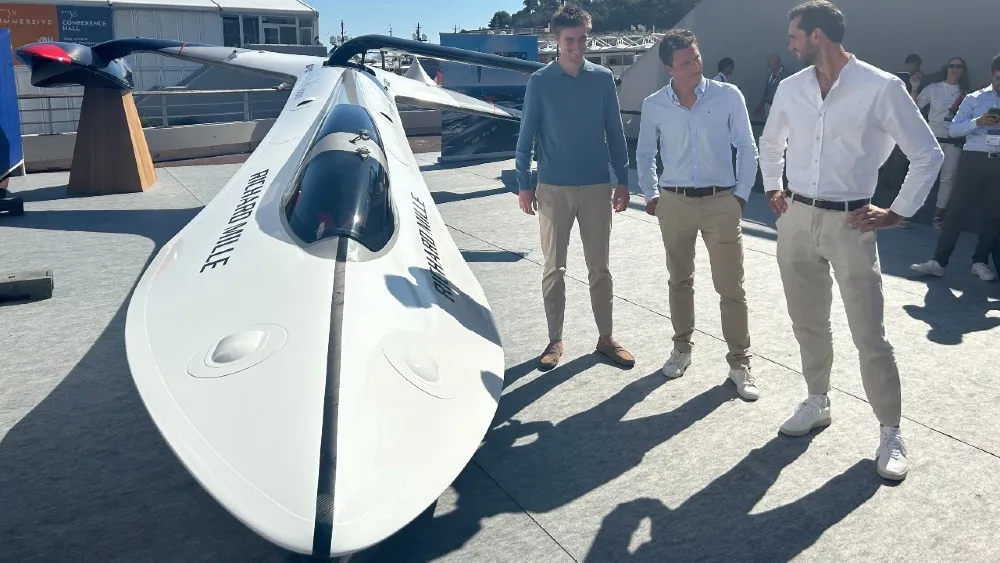
Image courtesy of Laura Manon
“The boat is now close to its full technical potential,” says SP80 pilot Mayeul van den Broek. “The challenge for Benoît and I now is to sail as much as possible to master the boatʼs behaviour from 0 to over 70 knots (130 km/h). We need to fine-tune our trajectories, improve our synchronisation, and push the machine even further.”
One mistake at these speeds could shatter the boat.
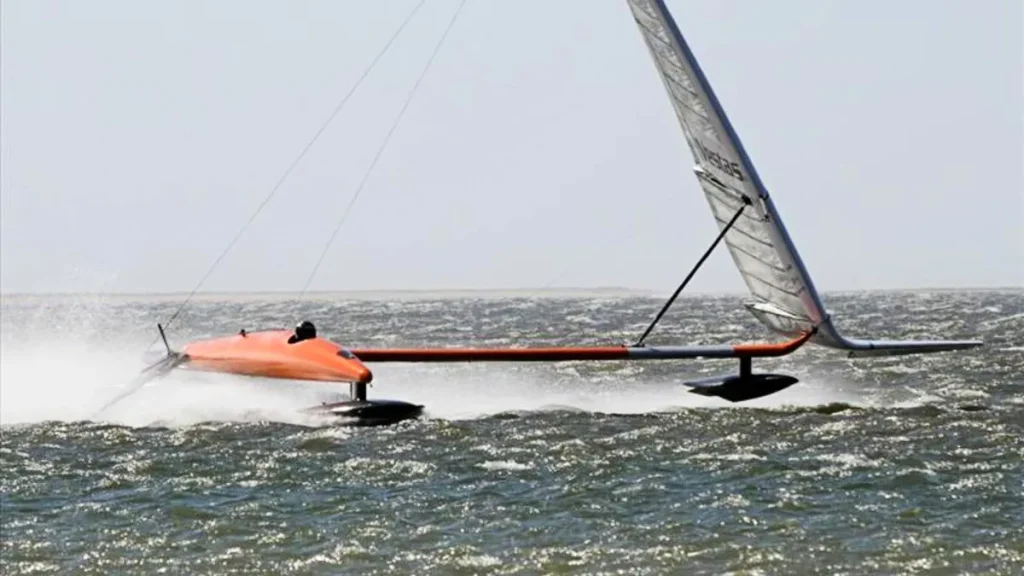
Image courtesy of Vestus Sailrocket
“The weather has not always been favourable, with winds often too light to accumulate significant sailing hours,” added van den Broek. “But with each outing, we can feel it—the logistics are running smoothly, the boat wants to go faster. All we need now is more time on the water to unleash its full potential.”
It hopes to reach that potential in the next few weeks.
Meanwhile, the Swiss team has a French competitor, Syroco, employing a kitesurfing sail that actually lifts the vessel above the water. But it will be tethered to the water by a long fin below the surface that serves as a sea anchor. That team plans to up the SP80’s ante by sailing just a hair faster, at 80.99 knots (or 93.2 mph).





